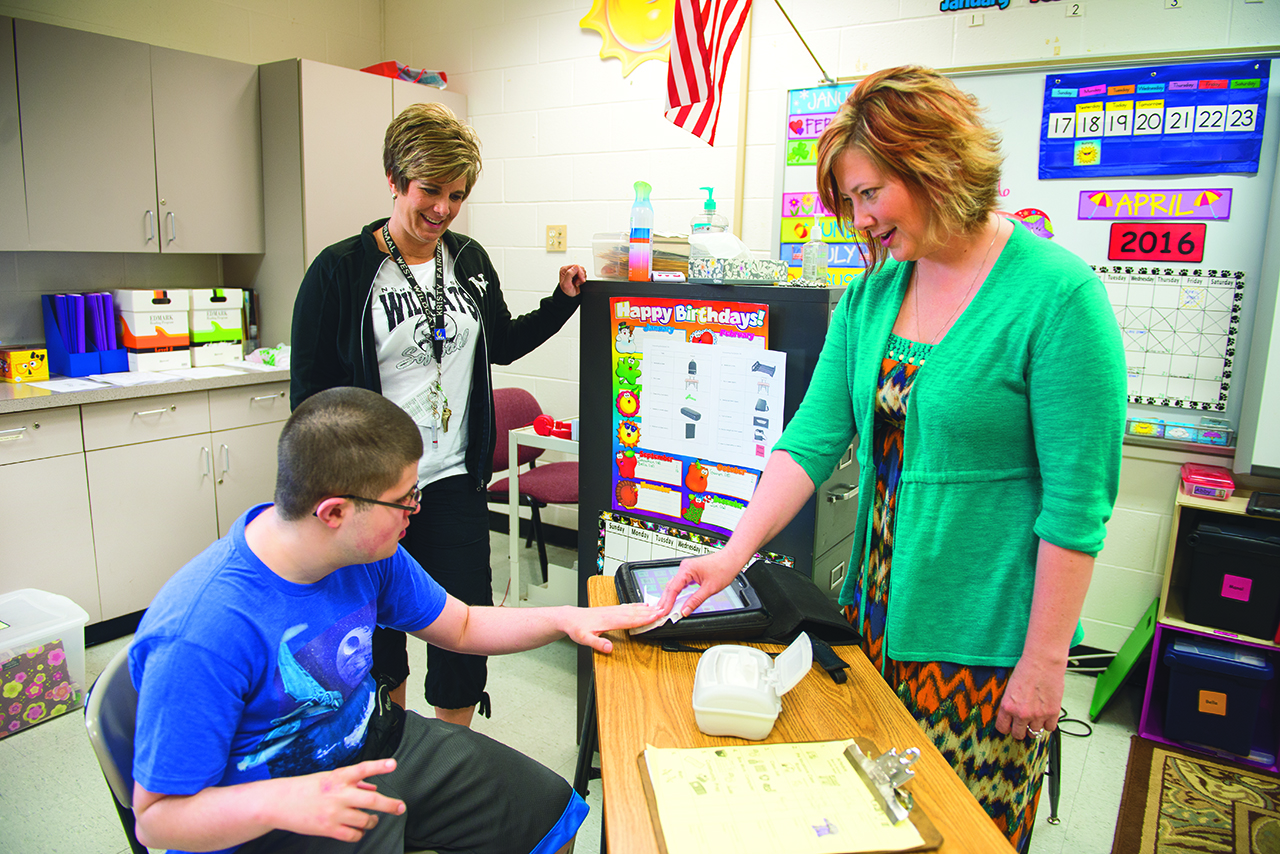Research into how to best teach a child who is blind, deaf, and autistic is scant. There is not even a reliable estimate of how many students have all three disabilities, and minimal research to direct teachers on how to best educate these students.
Illinois State doctoral student Kristi Probst ’96, M.S. ’98, is working to fill those gaps. Probst said one difficulty in researching this topic is identifying deaf-blind students who are also autistic. Many educators don’t understand deaf-blindness and sometimes misdiagnose children who can’t hear or see as being autistic because of the behaviors they exhibit.
Appears In“Deaf-blind children do things like flapping or spinning that people associate with autism. But a lot of times that’s because they don’t get the sensory input from their eyes and their ears,” Probst said.
Probst wants to tease out how to properly diagnose these students so she can develop interventions that help the students communicate better. She is starting by using the field of autism and its 50 years of research in evidence-based practices to see if she can adapt those practices to fit the needs of this deaf-blind population.
“I want to change the world. I can’t change everything in the world, but I want to change wherever I am because children shouldn’t be left out of education because the services aren’t there.”—Kristi Probst
“Those are the students that really I focus on,” Probst said. “This fellowship gives me the opportunity to do that.”
Last year Probst was one of 15 students from across the county—and the first Illinois State student—to receive a fellowship from the National Leadership Consortium in Sensory Disabilities (NLCSD). The consortium provides a scholarship and stipend to the selected doctoral students.
The goal of the program is to increase the number of professors in the blind and deaf education field.
“Our field is aging. Everybody is retiring, but there are not enough people to take their place. That’s why this fellowship was created,” said Olaya Landa-Vialard, a special education professor, a former NLCSD Fellow, and current coordinator of the College of Education’s low vision and blindness program. “Our field is considered low incidence but high maintenance, which is why if we don’t have people to train students, then there is not going to be anybody to work with our kids out in the field, and that is setting them up for failure.”
Probst taught for several years at Normal West High School before entering the doctoral program. At the high school, she worked with students with learning disabilities, including autism.
“While I loved that job, I also had degrees in low vision and blindness and deaf and hard of hearing, and I didn’t get to use those,” Probst said. “That’s where my passion has always been.”
Special Education Professor Christina Borders encouraged Probst to apply to be a doctoral student because of her background and her interest in Borders’ research.
“I kept having questions about why does education go in this direction,” Probst said. “Why do we not see more integration of these kiddos who have more severe disabilities? Why do they often get put in a classroom where they are segregated all day?”
Borders said the doctoral program gives Probst the time and resources to research those questions. The fellowship puts her in contact with doctoral students and researchers nationwide who are tackling similar problems.
The doctoral program is a juggling act for Probst. Last spring, she took classes, co-taught a course with Borders, and worked on several research projects.
These projects included a critical literature review on deaf children with autism that she presented with Borders and Special Education Department Chair Stacey Jones-Bock at a national conference.
Probst also conducted a survey of teachers of the visually impaired in Illinois. She asked the teachers what evidence-based practices they knew from the field of autism, what they used, and what they thought were effective.
“What I actually found was that teachers of the visually impaired are pretty well prepared. But the teachers who have been in the field for the longest amount of time know the least about evidence-based practices.”
The challenge will be to get her research into the hands of busy teachers so they can apply it in the classroom.
“I want to change the world. I can’t change everything in the world, but I want to change wherever I am because children shouldn’t be left out of education because the services aren’t there.”

